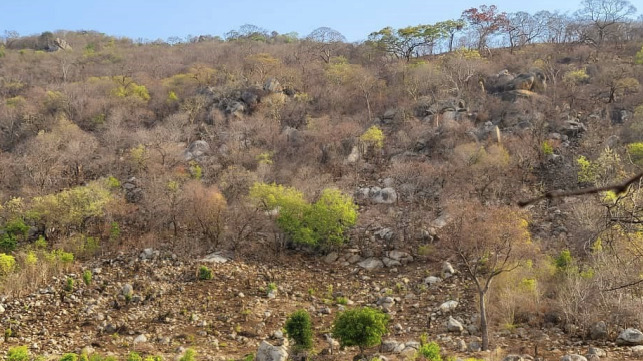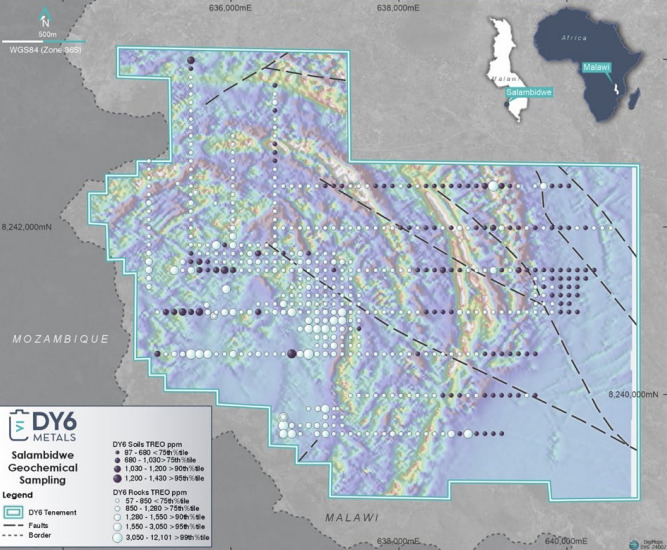DY6 Metals defines ‘enticingly large target’ at Salambidwe REE-niobium project in Malawi
Mining
Mining
Special Report: An initial geochemical and geophysical exploration program at Salambidwe in southern Malawi has increased the potential size and scale of REE and niobium target areas at the site.
DY6 Metals (ASX:DY6) has received the results from the 128 soil and 386 rock chip sampling program, with maximum values returning 1.21% total rare earth oxide (TREO) and 0.12% niobium.
A total of 514 soil and rock chip samples were collected over a 50km grid from outcrops across the licence area, alongside the completion of an airborne geophysical program consisting of 45-line kilometres of electromagnetic plus radiometric surveying to map the magnetic and conductive properties of the geology of Salambidwe.

Ground-based, grid-controlled geochemical sampling was undertaken to confirm historical exploration results from Globe Metals and Mining (ASX:GBE) and to expand the footprint of anomalous responses.
Previous activity did not close off the anomalous zones, nor had airborne geophysical surveys covered the area due to its proximity to the border with Mozambique.
DY6’s sampling was specifically aimed at either extending or closing off these anomalous zones to the northern and western part of the licence.
Although the area of historical sampling was not resampled, several traverses were made across the outlined anomalous areas to ensure consistency and coherency of results.

Absolute values obtained from the DY6 exploration appear to be slightly lower in tenor than the historical data.
The company says this is due to the majority of its sampling being peripheral to the historical sampling and extending away from the central anomalous area.
Detailed sampling expanded the anomalous areas on 100x100m spacing and the more regional and confirmatory sampling was at 100m intervals along lines 500m apart.
DY6 says niobium results also extended anomalous areas, with the Western Zone now about 1,700m long (including outside tenure) and the Eastern Zone recording 1,500m in length.
“The expansion of the anomalous areas at Salambidwe creates an enticingly large target, the exploration team have done an excellent job in rugged terrain,” DY6 chief executive Lloyd Kaiser says.
DY6 now plans to define the priority targets for drill testing and will review these in conjunction with the digital terrain data to ascertain accessibility.
This article was developed in collaboration with DY6 Metals, a Stockhead advertiser at the time of publishing.
This article does not constitute financial product advice. You should consider obtaining independent advice before making any financial decisions.